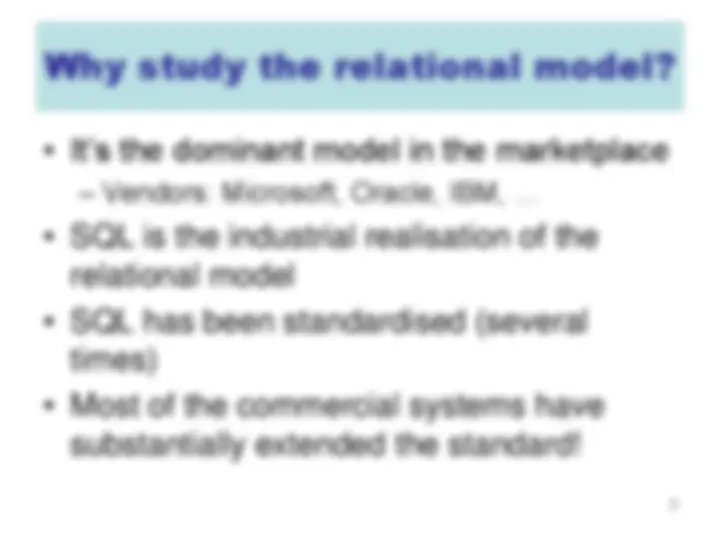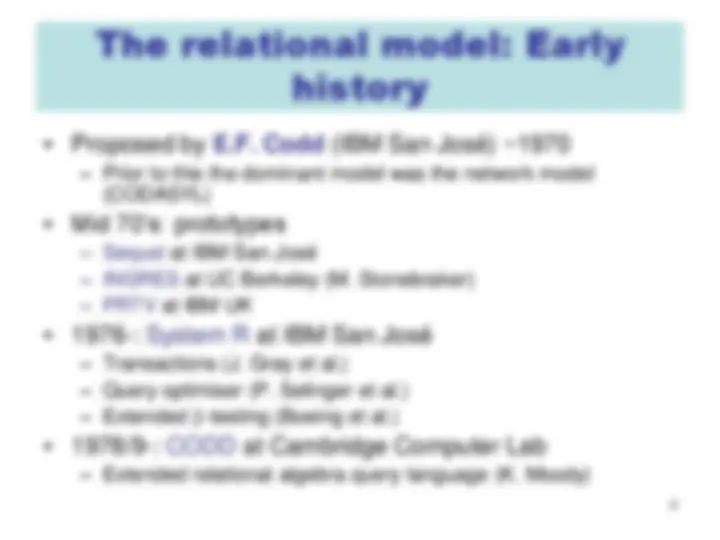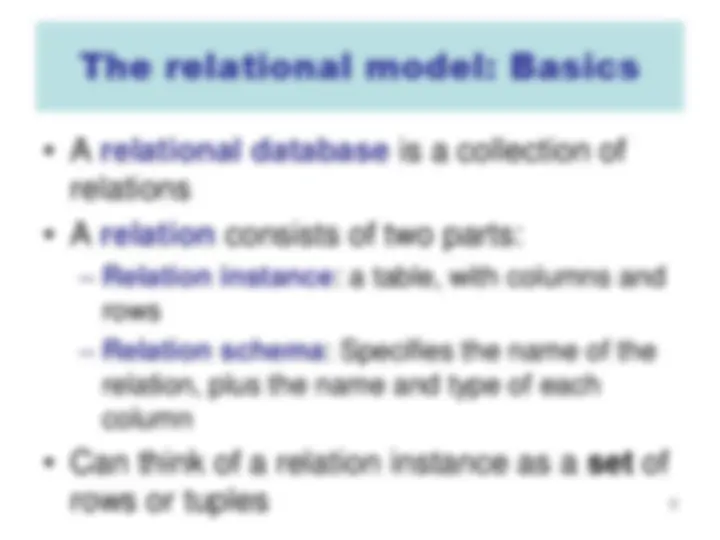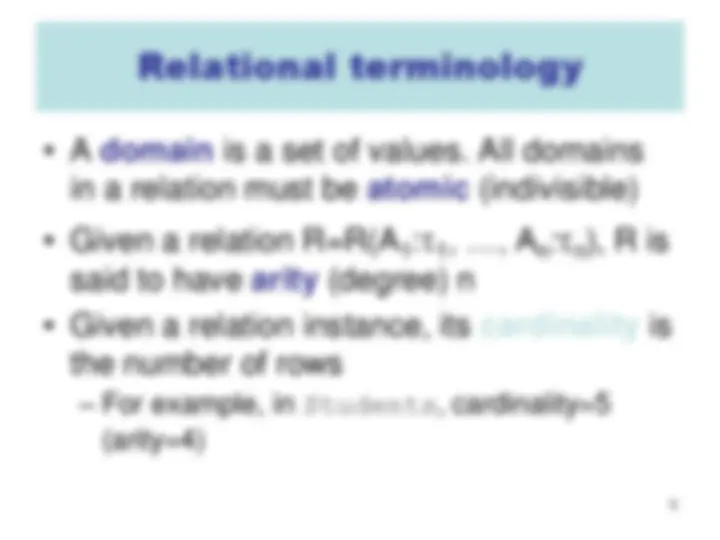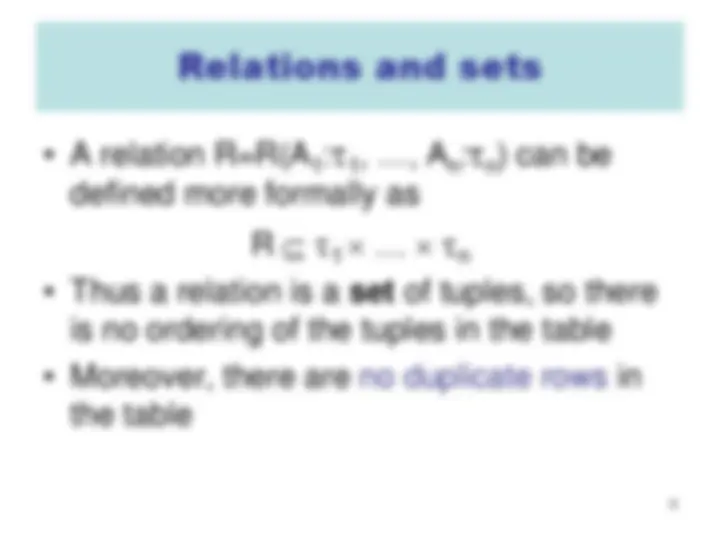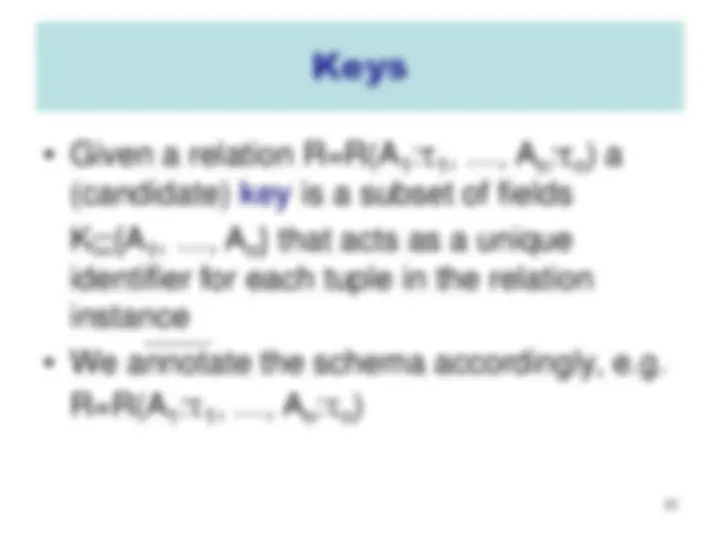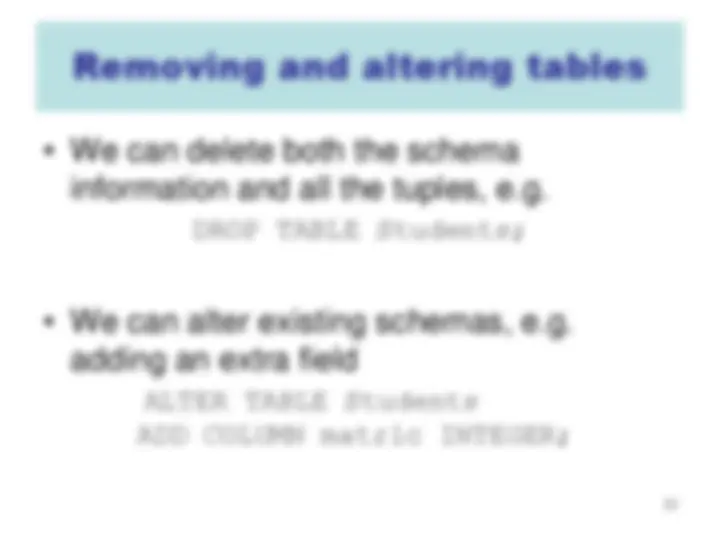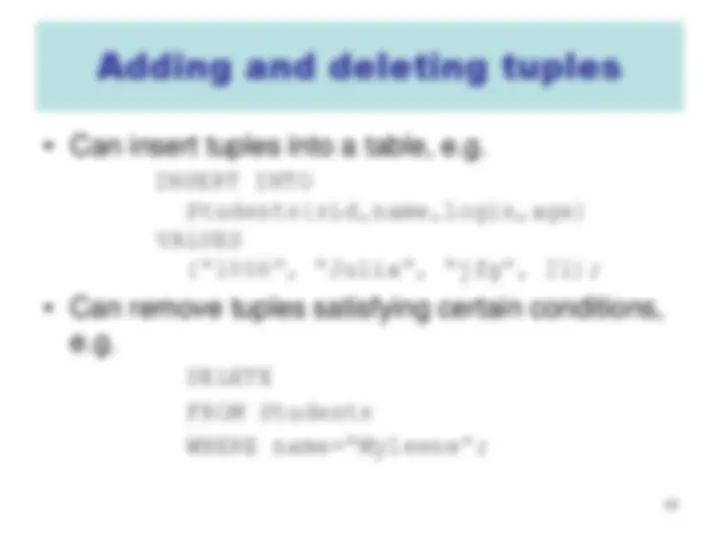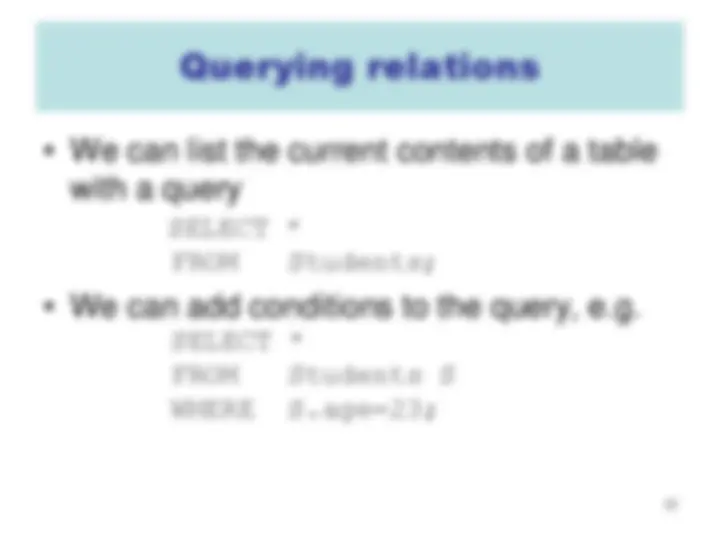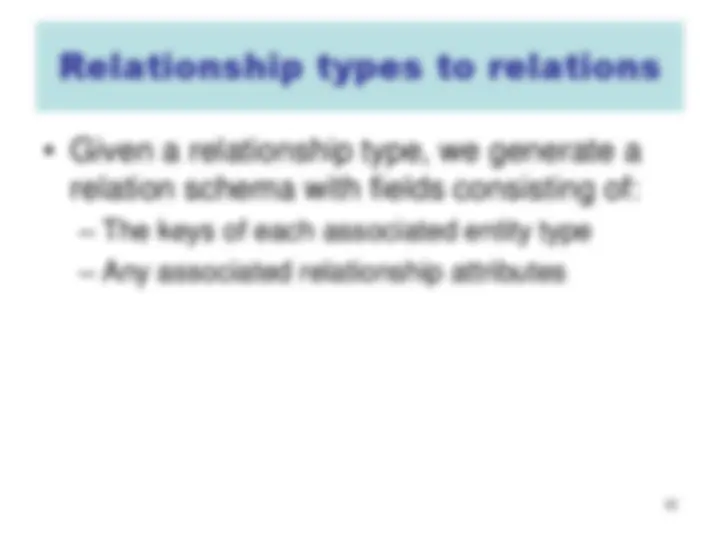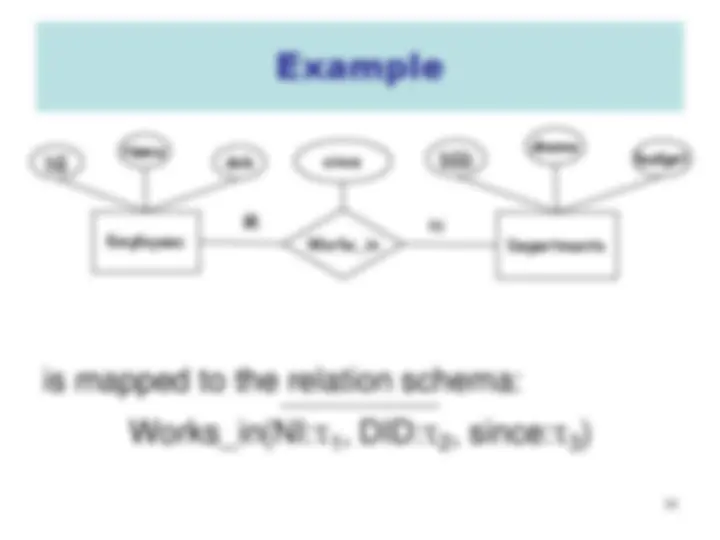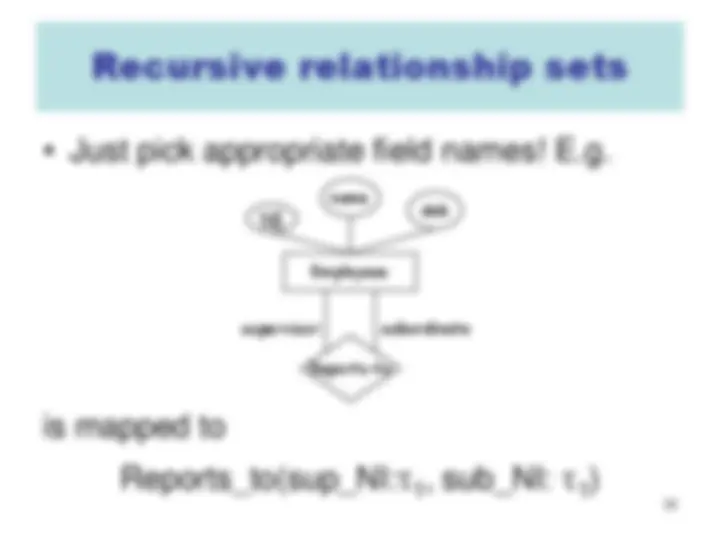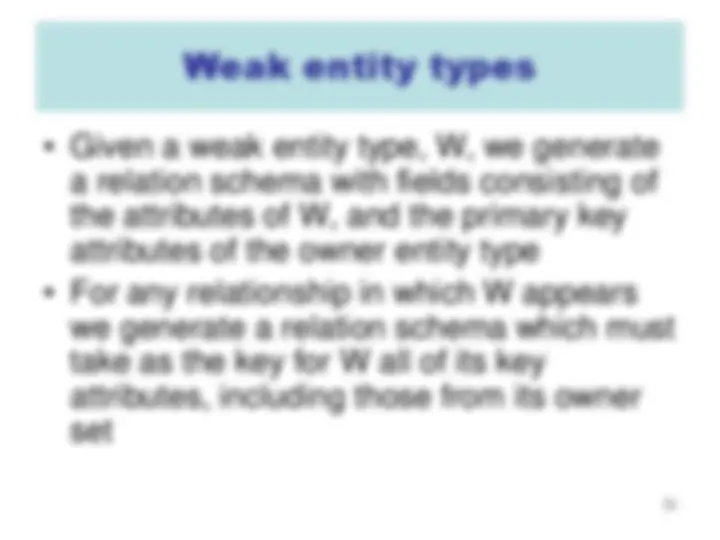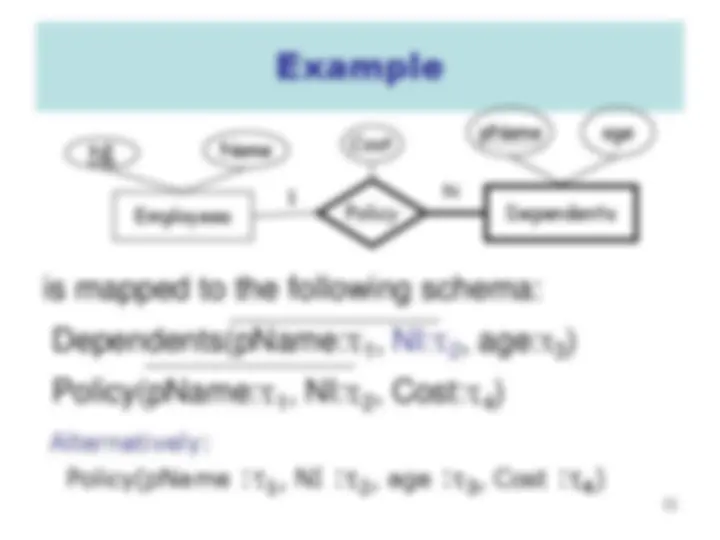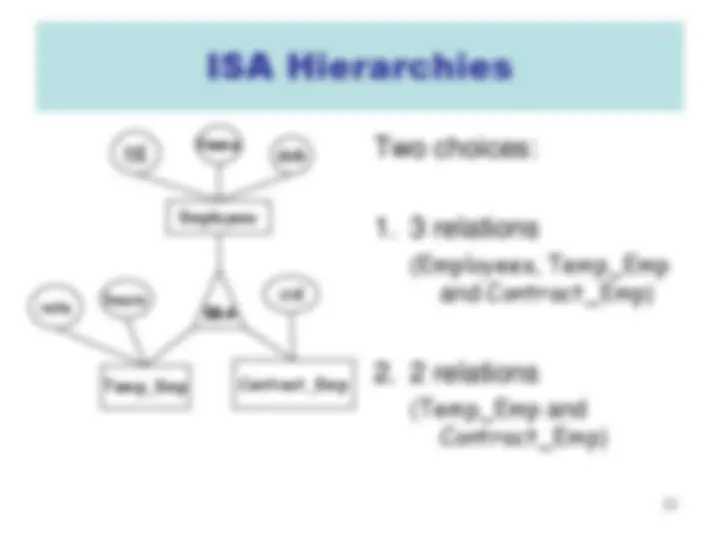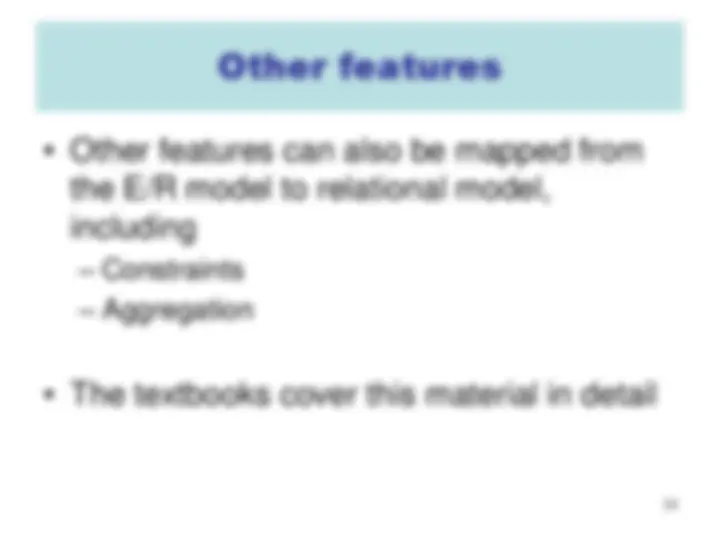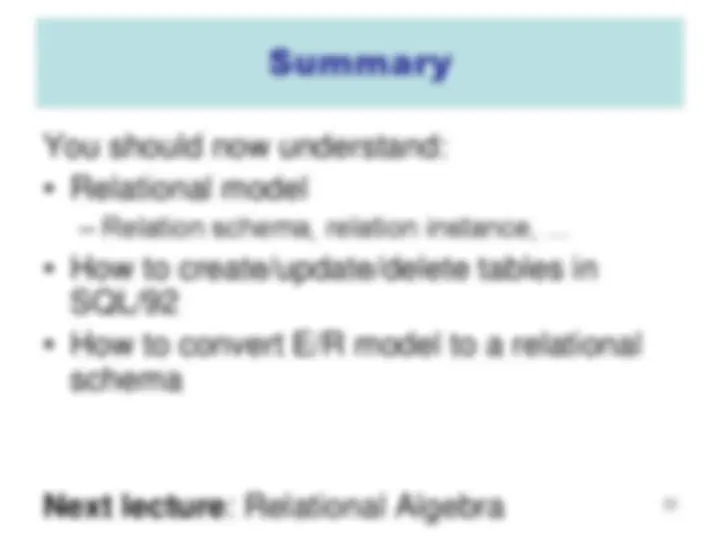Download Understanding the Relational Model and SQL for Database Management and more Slides Database Management Systems (DBMS) in PDF only on Docsity!
1
Lecture 3:
The relational model
www.cl.cam.ac.uk/Teaching/current/Databases/
E.F. Codd
Today’s lecture
- What’s the relational model?
- What’s SQL?
- How do we create databases in SQL?
- How do we convert E/R models to a relational model?
- How do we enforce real-life constraints in a relational database?
The relational model: Early
history
- Proposed by E.F. Codd (IBM San José) ~
- Prior to this the dominant model was the network model (CODASYL)
- Mid 70’s: prototypes
- Sequel at IBM San José
- INGRES at UC Berkeley (M. Stonebraker)
- PRTV at IBM UK
- 1976-: System R at IBM San José
- Transactions (J. Gray et al.)
- Query optimiser (P. Selinger et al.)
- Extended -testing (Boeing et al.)
- 1978/9-: CODD at Cambridge Computer Lab
- Extended relational algebra query language (K. Moody)
5
The relational model: Basics
- A relational database is a collection of relations
- A relation consists of two parts:
- Relation instance : a table, with columns and rows
- Relation schema : Specifies the name of the relation, plus the name and type of each column
- Can think of a relation instance as a set of rows or tuples
Examples
sid name login^ age 1001 Myleene MK 23 1002 Danny DF 22 1003 Noel NS 21 1004 Suzanne SS 20 1005 Johnny JS 23
Field names
Fields
Tuples
Relational terminology
- A domain is a set of values. All domains in a relation must be atomic (indivisible)
- Given a relation R=R(A 1 : 1 , …, An: (^) n), R is said to have arity (degree) n
- Given a relation instance, its cardinality is the number of rows - For example, in Students, cardinality= (arity=4)
Keys
- Given a relation R=R(A 1 : 1 , …, An: (^) n) a (candidate) key is a subset of fields K {A 1 , …, An} that acts as a unique identifier for each tuple in the relation instance
- We annotate the schema accordingly, e.g.
R=R(A 1 : 1 , …, An: (^) n)
SQL
- SQL is the ubiquitous language for relational databases
- Standardised by ANSI/ISO in 1992: SQL/
- Part of SQL is a Data Definition Language (DDL) that supports the creation, deletion and modification of tables
Removing and altering tables
- We can delete both the schema information and all the tuples, e.g. DROP TABLE Students;
- We can alter existing schemas, e.g. adding an extra field ALTER TABLE Students ADD COLUMN matric INTEGER;
Adding and deleting tuples
- Can insert tuples into a table, e.g. INSERT INTO Students(sid,name,login,age) VALUES (“1006”, “Julia”, “jfg”, 21);
- Can remove tuples satisfying certain conditions, e.g. DELETE FROM Students WHERE name=“Myleene”;
From E/R diagrams to relations
- The E/R model is convenient for representing the high-level database design
- Given an E/R diagram there is a reasonably straightforward method to generate a relation schema that corresponds to the E/R design
Entity types to relations
- A (strong) entity type maps to a relation schema in the obvious way, e.g.
is mapped to the relation schema
Employees(NI: 1 , Name: 2 , dob: 3 )
NI Name dob
Employees
Example
is mapped to the relation schema:
Works_in(NI: 1 , DID: 2 , since: 3 )
Works_in
NI Name dob
Employees
DID dname budget
Departments
since
M (^) N
Recursive relationship sets
- Just pick appropriate field names! E.g.
is mapped to
Reports_to(sup_NI: 1 , sub_NI: 1 )
Employees
Reports-to
NI
name (^) dob
supervisor subordinate

